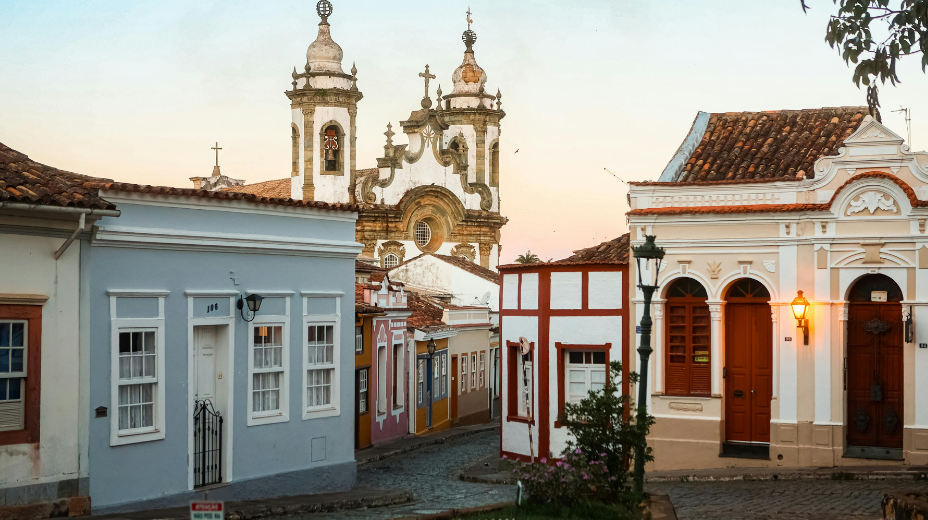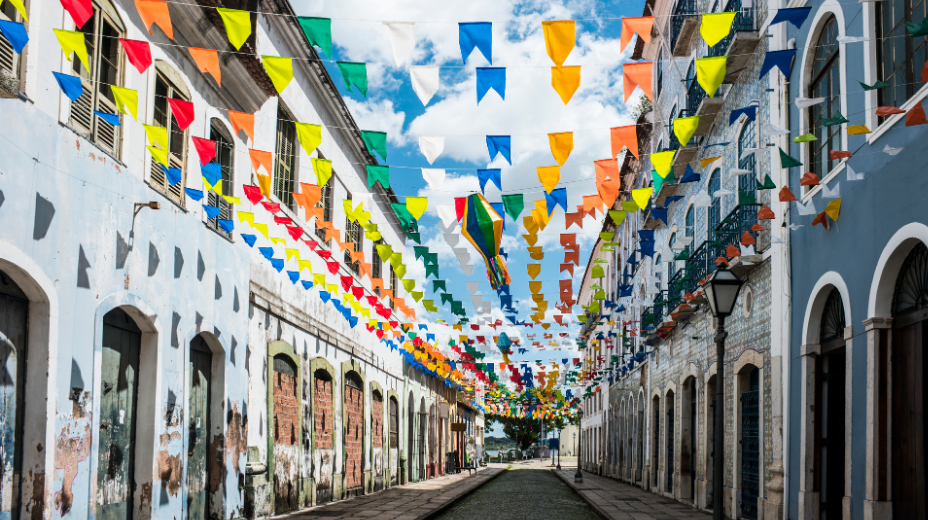Brazil hosts one of the largest and most influential Masonic communities in South America, with a history stretching back over two centuries.
Freemasonry in Brazil first appeared in documents from 1797 and played a crucial role in the country’s independence movement, with Emperor Dom Pedro I himself serving as a Mason alongside his advisor José Bonifácio, who became the first grand master of the Grand Orient of Brazil in 1822.
Despite facing multiple bans throughout its history, the fraternity grew rapidly and spread its influence to neighboring Paraguay and Uruguay.
Today, Brazilian Freemasonry operates through a complex network of lodges and grand lodges across the country’s diverse regions.
The Grand Orient of Brazil remains the historic obedience, while 22 state-based Grand Lodges also serve members throughout the nation.
For visiting Masons or those curious about the craft in Brazil, understanding the structure, rituals, and cultural significance of Brazilian Freemasonry offers insight into both the fraternity and the country itself.
From the bustling cities of São Paulo and Rio de Janeiro to the capital Brasília, Masonic lodges operate throughout Brazil and continue to shape the nation’s social fabric.
The blend of European traditions with Brazilian culture has created a unique Masonic experience that reflects the country’s diverse heritage.
Key Takeaways
- Freemasonry has been present in Brazil since the late 1700s and helped shape the nation’s independence in 1822.
- Brazil has the largest Masonic membership in South America with lodges operating in every major city and state.
- Multiple grand lodges and rites coexist in Brazil, creating a diverse and complex Masonic landscape with strong international connections.

Freemasonry’s Arrival and Early Development in Brazil
Freemasonry took root in Brazil during the late 18th and early 19th centuries, with competing claims about its exact origins and early growth shaped by French influences and political tensions.
Origins of the First Lodge in Brazil
The first lodge in Brazil has debated beginnings, with researchers pointing to different founding dates. Some believe the Areópago de Itambé in Pernambuco started the movement in 1796. However, the official landmark came in 1801 with the creation of Loja Encontro in Rio de Janeiro.
French authority established the first lodge as early as 1815 according to some accounts. The lodge was definitely operating by 1820.
Before formal lodges appeared, political and literary societies with secret characteristics spread Masonic ideas throughout Brazil. These groups existed in Rio Grande do Sul from the 1830s onward and represented early national struggles in the region.
Influence of the French Rite
The French Rite shaped early Brazilian Freemasonry in fundamental ways. In 1820, a working lodge split into three parts. These three sections met in 1821 and formed the Grand Orient of Brazil using French Rite practices.
Three lodges from Rio de Janeiro created the Grande Oriente Brasileiro on June 17, 1822. The founding lodges were the Golden Age of Commerce and Arts, Union and Tranquilidade, and Esperança of Niterói.
The French influence established organizational patterns that Brazilian Masonry would follow for years. This connection to France gave Brazilian lodges their ritual structure and philosophical approach.
Early Opposition and Political Climate
José Bonifácio de Andrada e Silva served as the first leader of the Grand Orient, holding the position of Minister of the Kingdom and Foreign Affairs. Political rivalry between José Bonifácio’s group and Joaquim Gonçalves Ledo’s faction created serious tensions.
After Brazil declared independence on September 7, 1822, Emperor D. Pedro I (known as Brother Guatimozim in Masonic circles) replaced José Bonifácio as Grand Master on October 4. The Emperor ordered the suspension of Grand Orient work on October 25, 1822, citing the instability of the new nation.
Masonic activity remained suspended until November 1831. The Grand Orient of Brazil reinstalled after D. Pedro I abdicated on April 7, 1831. From that point forward, the organization never again suspended its activities and became a permanent fixture in Brazilian society.
Formation and Evolution of the Grand Orient of Brazil
The Grand Orient of Brazil formed in 1822 during a critical moment in Brazilian history. The organization went through several splits and reunions before achieving stability, with José Bonifácio de Andrada e Silva playing a central role in its early days.
Role of José Bonifácio de Andrada e Silva
Three lodges from Rio de Janeiro came together on June 17, 1822 to create the Grand Orient of Brazil. The lodges involved were the Golden Age of Commerce and Arts, Union and Tranquilidade, and Esperança of Niterói.
José Bonifácio de Andrada e Silva became the first leader, serving alongside Joaquim Gonçalves Ledo as First Vigilante. At the time, José Bonifácio also held the position of Minister of the Kingdom and Foreign Affairs.
His leadership didn’t last long. After Brazil declared independence on September 7, 1822, Prince Regent D. Pedro I replaced him on October 4.
Political rivalry between José Bonifácio’s group and Gonçalves Ledo’s faction caused problems for the young nation.
D. Pedro I ordered the Grand Orient to stop its work on October 25, 1822. The organization stayed closed until November 1831, after D. Pedro I gave up his throne on April 7 of that year.
The Splits and Reunions
The first lodge in Brazil started around 1815 under French authority. By 1820, this lodge split into three parts.
These three parts met in 1821 and formed the Grand Orient of Brazil according to the French Rite. The organization went through major changes over the years, with splits happening in 1927 and 1973.
The Grand Orient installed itself in the Lavradio Masonic Palace in Rio de Janeiro starting in 1842. From there, it spread lodges to almost every province in Brazil.
The Path Towards Masonic Union
After its 1831 reopening, the Grand Orient of Brazil never suspended its activities again. The organization kept growing and working toward unity among Brazilian Masons.
Today, the Grand Orient of Brazil operates around 2,000 lodges with roughly 61,500 active members. More than 100 regular obediences around the world recognize it.
The United Grand Lodge of England recognizes the Grand Orient of Brazil as regular and legitimate under the terms of the Treaty of 1935.
This recognition helped establish the organization as the largest Masonic obedience in the Latin world. The Grand Orient follows the tradition of Anglo-American Freemasonry with its 1,700 lodges spread across the country.
Major Masonic Rites and Influences

Brazil’s Masonic landscape has been shaped primarily by European traditions, with the Scottish and French systems establishing the strongest presence. These rites brought different degrees, rituals, and organizational structures that continue to define how lodges operate across the country today.
Ancient and Accepted Scottish Rite
The Ancient and Accepted Scottish Rite stands as one of the two most widely practiced systems in Brazil. This rite offers an extensive degree structure that reaches up to the thirty-third degree, providing members with a comprehensive path of Masonic education and advancement.
The Scottish Rite’s influence in Brazil dates back to the 19th century. In 1883, Brazilian Freemasons achieved unity under a single Grand Orient that officially recognized this rite alongside others. The system’s 33 degrees give members more opportunities for study and involvement compared to simpler rites.
Today, the Scottish Rite remains popular because of its detailed symbolism and complex ceremonies. Lodges using this system follow established rituals that connect them to a global network of Masonic bodies, including various Supreme Councils worldwide that oversee the rite’s higher degrees.
French and Adonhiramite Rites
The French influence arrived in Brazil through both the Modern French Rite and the Adonhiramite Rite. Freemasonry in Brazil officially recognized both systems when the Grand Orient achieved union in 1883.
The Adonhiramite Rite operates with 33 degrees, similar to the Scottish system. It developed from French Masonic traditions and brought its own distinctive ceremonies and teachings to Brazilian lodges.
This rite focuses on particular symbolic interpretations that differ from the Scottish approach.
The Modern Rite takes a different path with only seven degrees. Its simpler structure appeals to lodges that prefer less complex ritual work while maintaining authentic Masonic principles and practices.
Notable Grand Lodges and Regional Masonic Bodies
Brazil’s Masonic landscape includes several regional grand lodges that operate alongside the Grand Orient of Brazil, each serving specific geographic areas. Two prominent examples in the southern region demonstrate how Masonic governance adapts to local communities.
Grand Orient of Lavrado Valley
The Grand Orient of Lavrado Valley serves Masonic lodges in the Lavrado Valley region of southern Brazil. This regional body operates independently while maintaining fraternal recognition with other Masonic organizations throughout the country.
Like other regional grand lodges in Brazil, it oversees the initiation of new members and ensures lodges follow established Masonic practices.
The organization focuses on preserving Masonic traditions while adapting to the needs of its local community. Regional bodies like this one help manage the growth that has made Brazil home to more than 213,000 Masons across 6,500 lodges.
Grand Orient of Benedictino Valley
The Grand Orient of Benedictino Valley governs Masonic lodges in another distinct region of Brazil’s south. This grand lodge maintains its own leadership structure and ceremonial practices while sharing the fundamental principles common to Brazilian Freemasonry.
The organization works within states like Rio Grande do Sul and Parana, areas known for strong Masonic presence. Porto Alegre, the capital of Rio Grande do Sul, hosts numerous lodges that fall under various jurisdictional bodies including regional grand lodges.
These regional organizations help distribute the administrative responsibilities that come with Brazil’s rapidly expanding Masonic membership, particularly as the median age of new initiates has dropped to 28 years old.
International Connections and Foreign Influence
Brazil’s Masonic landscape drew heavily from European traditions, with German and Italian immigrants establishing their own lodges while maintaining ties to their home countries.
The British imperialist pressures influenced both politics and Freemasonry, as the United Grand Lodge of England held hegemonic power across South America.
German and Italian Lodges in Brazil
German immigrants brought Masonic traditions to southern Brazil during the 19th century. They established lodges in cities like Joinville and Blumenau that conducted rituals in German and preserved their cultural heritage. These lodges often maintained correspondence with Grand Lodges in Germany.
Italian Masons followed a similar pattern when they settled in São Paulo and surrounding areas. The Grand Orient of Italy influenced several lodges in Botucatu and other regions where Italian immigration was strongest.
These lodges helped Italian immigrants integrate into Brazilian society while keeping their Masonic connections to Europe alive.
Both German and Italian lodges eventually adapted their practices to include Portuguese-speaking members. They merged European Masonic traditions with Brazilian customs over time.
Global Masonic Partnerships
The Supreme Council of Belgium established formal relationships with Brazilian Masonic bodies in the early 20th century.
This partnership helped standardize Scottish Rite degrees across South America. Belgian Masons shared ritual texts and organizational structures with their Brazilian counterparts.
The United Grand Lodge of England set standards for Masonic regularity and recognition globally, which affected how Brazilian lodges operated. English Masonic influence shaped recognition policies that Brazilian Grand Lodges used when dealing with other countries in South America.
French Masonic concepts also shaped early Brazilian Freemasonry with an emphasis on political and religious freedom. This influence spread to Paraguay and Uruguay as Brazilian Masonry expanded.
Impact on Brazilian Society and Culture

Brazilian Freemasonry shaped the nation’s educational foundations and navigated complex tensions with the Catholic Church during critical periods of national development.
Role in Education and Civil Society
Brazilian Freemasons played a major part in building the country’s education system during the 1800s. They pushed for secular schools that would teach all citizens, not just the wealthy elite. Many lodges opened their own schools and libraries in cities across Brazil.
Freemasons helped Southern Americans establish educational institutions in towns like Santa Bárbara d’Oeste and Americana after the Civil War. These schools brought new teaching methods to Brazil.
The fraternity also worked on social reforms. Members fought to end slavery and supported republican ideas that eventually replaced the monarchy.
Emperor Pedro II himself maintained friendly relationships with many Freemasons, even though he wasn’t a member.
Relationship with Roman Catholicism
The relationship between Freemasons and Roman Catholicism in Brazil was often rocky. The Catholic Church saw Freemasonry as a threat to its power and influence.
Things got really tense during the 1870s in what became known as the Religious Question. Two bishops tried to punish priests who were Freemasons. Emperor Pedro II sided with the Freemasons, which caused a major clash between church and state.
Freemasons worked to ensure the secularity of the Brazilian State despite living in a Catholic-dominated society. They supported the separation of church and state, which became official when Brazil became a republic in 1889.
This conflict helped establish religious freedom in Brazil’s constitution.
Modern Brazilian Freemasonry Today
Brazil has become one of the world’s largest Masonic populations, with over 6,000 lodges spread across the country and membership numbers that continue to climb while lodges in other nations see decline.
The fraternity draws younger members and maintains a visible public presence that sets it apart from Freemasonry in most other countries.
Growth and Diversity of Masonic Lodges
Freemasonry in Brazil experienced explosive growth during the early 2000s economic boom. From 2003 to 2009, the Grande Oriente do Brasil added nearly 500 lodges and 14,000 members. By 2013, Brazil had more than 213,000 Masons across 6,500 lodges.
São Paulo alone hosts over 800 lodges affiliated with just the Grande Oriente do Brasil. That’s more than double the number of lodges in California, despite having similar population sizes.
Masonic lodges operate throughout Brazil, from major cities like Rio de Janeiro and Brasília to small countryside towns.
Several grand lodges govern different regions and operate under various rites, including the Ancient and Accepted Scottish Rite, York Rite, and the uniquely Brazilian Rite founded in 1914.
Recent Trends and Challenges
The median age of new Brazilian Freemasons now sits at just 28 years old. Lodges regularly initiate members who are 20 or 21 years old, with strong recruitment among college students and military personnel.
Brazilian Masons openly display their affiliation through bumper stickers, signet rings, and lodge banners. Vice President Hamilton Mourão recently appeared on national television to discuss Freemasonry, with the house band playing a Masonic anthem.
Small-town lodges help foster community networks where other social structures may be lacking. Members view their Masonic identity as a badge of honor rather than something to keep private.
The bicentennial celebrations of Brazilian independence and Freemasonry’s role in it have brought even more attention to lodges across all states.
